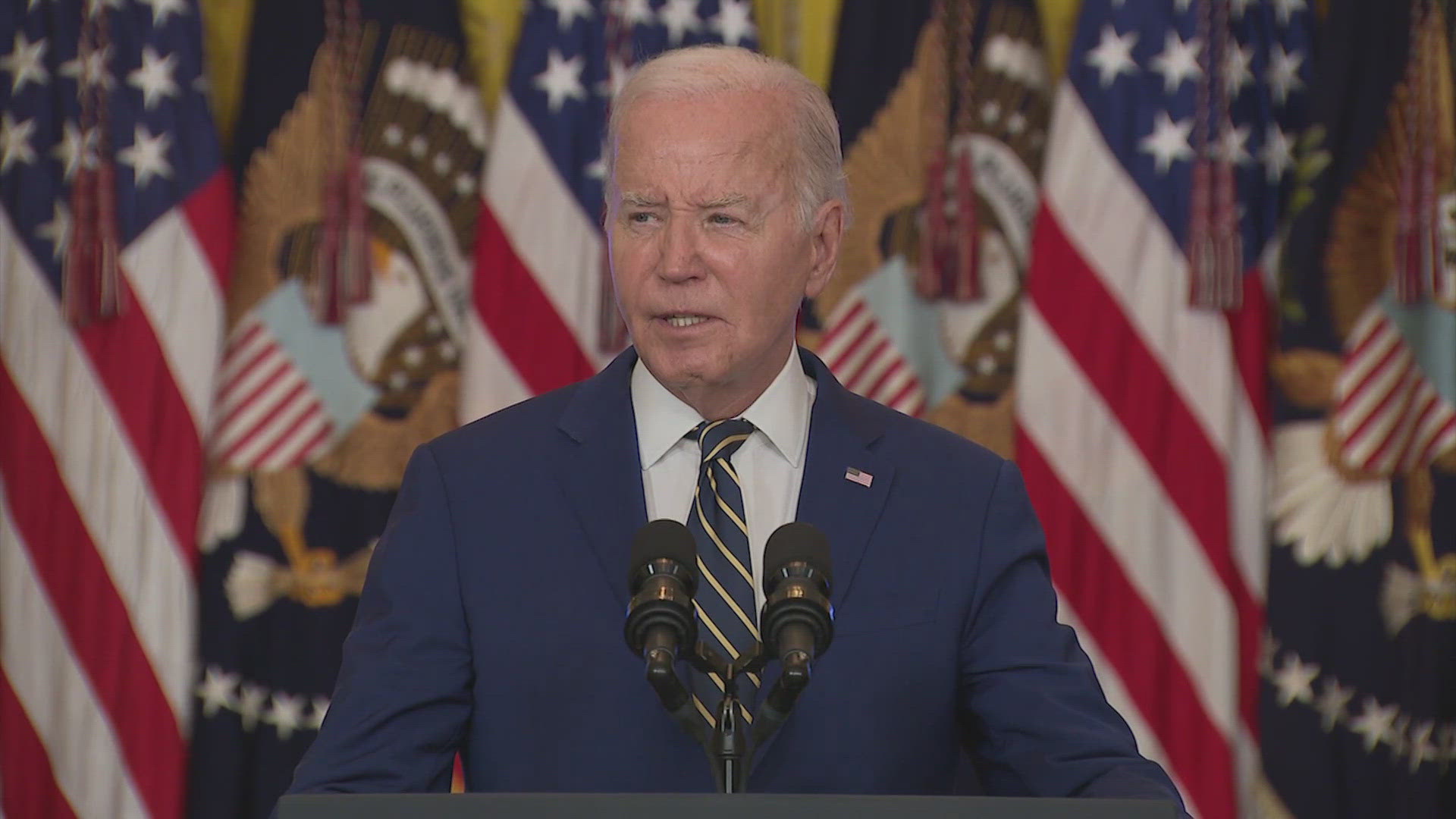President Joe Biden on Tuesday unveiled plans to enact immediate significant restrictions on migrants seeking asylum at the U.S.-Mexico border as the White House tries to neutralize immigration as a political liability ahead of the November elections.
The White House detailed the long-anticipated presidential proclamation signed by Biden, which would bar migrants from being granted asylum when U.S. officials deem that the southern border is overwhelmed. The Democratic president has contemplated unilateral action for months, especially after the collapse of a bipartisan border security deal in Congress that most Republican lawmakers rejected at the behest of Donald Trump, the presumptive GOP presidential nominee.
The order will go into effect when the number of border encounters between ports of entry hits 2,500 per day, according to senior administration officials. That means Biden’s order should go into effect immediately because that figure is higher than the daily averages now. The restrictions would be in effect until two weeks after the daily encounter numbers are at or below 1,500 per day between ports of entry, under a seven-day average. Those figures were first reported by The Associated Press on Monday.
Once this order is in effect, migrants who arrive at the border but do not express fear of returning to their home countries will be subject to immediate removal from the United States, within a matter of days or even hours. Those migrants would face punishments that could include a five-year bar from reentering the U.S., as well as potential criminal prosecution.
Meanwhile, anyone who expresses that fear or intention to seek asylum will be screened by a U.S. asylum officer but at a higher standard than what is currently used. If they pass the screening, they can pursue more limited forms of humanitarian protection, including the U.N. Convention Against Torture.
Biden’s order was detailed by four senior administration officials who insisted on anonymity to describe the effort to reporters. The directive is coming when the number of migrants encountered at the border have been on a consistent decline since December, but senior administration officials nonetheless justified the order by arguing that the numbers are still too high and that the figures could spike in better weather, when the encounter numbers traditionally increase.
Yet many questions and complications remain about how Biden's new directive would be implemented.
For instance, the Biden administration already has an agreement with Mexico in which Mexico agrees to accept up to 30,000 citizens a month from Cuba, Haiti, Nicaragua and Venezuela once they are denied entry from the U.S., and senior administration officials say that will continue under this order. But it is unclear what happens to nationals of other countries who are denied under Biden’s directive.
Senior officials also acknowledged that the administration’s goal of deporting migrants quickly is complicated by insufficient funding from Congress to do so. The administration also faces certain legal constraints when it comes to detaining migrant families, although the administration said it would continue to abide by those obligations.
The legal authority being invoked by Biden comes under Section 212(f) of the Immigration and Nationality Act, which allows a president to limit entries for certain migrants if it’s deemed “detrimental” to the national interest. Senior officials expressed confidence that they would be able to implement Biden’s order, despite threats from prominent legal groups to sue the administration over the directive.
The senior administration officials insisted that Biden’s proposal differs dramatically from that of Trump, who leaned on the same provisions of the Immigration and Nationality Act that Biden is using, including his 2017 directive to bar citizens of Muslim-majority nations and his efforts in 2018 to clamp down on asylum.
For instance, Biden’s order outlines several groups of migrants who would be exempted due to humanitarian reasons, including victims of human trafficking, unaccompanied minors and those with severe medical emergencies.
The directive would also exempt migrants who arrive in what senior officials called an orderly fashion, which includes people who make appointments with border officials at ports of entry using the U.S. Customs and Border Protection’s CBP One app. About 1,450 appointments are made a day using the app, which launched last year.
Average daily arrests for illegal crossings from Mexico were last below 2,500 in January 2021, the month that Biden took office. The last time the border encounters dipped to 1,500 a day was in July 2020, at the height of the COVID-19 pandemic.
Congressional Republicans, who almost all rejected the Senate’s bipartisan border proposal earlier this year, dismissed Biden’s order as nothing more than a “political stunt” meant to show toughened immigration enforcement ahead of the election.
“He tried to convince us all for all this time that there was no way he could possibly fix the mess,” Republican House Speaker Mike Johnson said at a news conference. “Remember that he engineered it."

